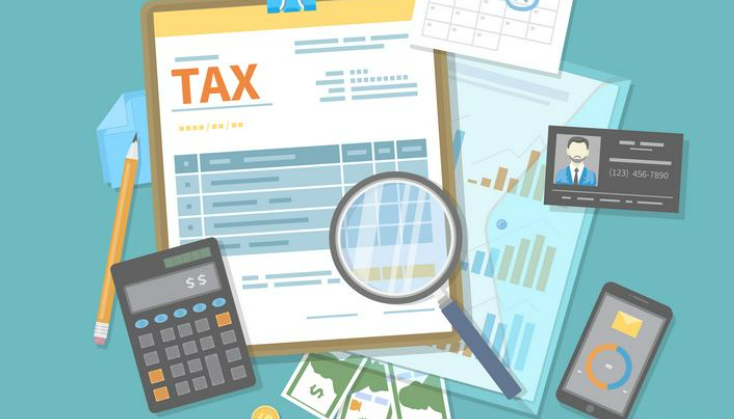These are the tax credits, grants and loans for businesses in the Inflation Reduction Act

The Inflation Reduction Act continues a host of tax credits, grants and loans that could benefit small businesses, but experts say pursuing them could take some legwork.
The legislation, recently signed by President Joe Biden, contains a host of tax credits and other potentially lucrative programs for business owners engaged in energy, climate mitigation or research.
Ryan Walker, senior vice president of federal affairs at Shumaker Advisors LLC, said businesses should pay close attention to the many opportunities in the legislation.
“Regardless of the politics of the larger Inflation Reduction Act, the bill provides a lot of interesting opportunities for people in the renewable and alternative energy spaces,” Walker said.
That includes the so-called “45Q” tax credit, which provides credits and benefits related to carbon capture and storage. It increases the tax credit to $85 per ton and decreases the eligibility threshold for qualifying projects. The new law also allows the taxpayer to claim the credit as though it were an overpayment of taxes.
Some of the tax credits buried in the bill are worth business owners taking the time to see if there is any opportunity for investment or to expand into new areas, Walker said.
“I think when companies are looking to get into this either from an investor standpoint or a business who is in this space they are hopefully going to look long and hard at this and say, ‘This is our opportunity. It’s not going to get any better,” Walker said.
He noted it could be a challenge for small-business owners to sift through the legislation, and to track the complicated rulemaking process that will follow.
“Unless you are a large company with a big compliance or regulatory department, it’s finding the time to dig into the bill,” Walker said. “There are so many minute opportunities, and if you didn’t know where you are looking, you are not going to be able to find it.”
Other credits, loans and grants in the Inflation Reduction Act
- $837.5 million in loans and grants to improve the energy efficiency, water efficiency or climate resilience of affordable housing. The Department of Housing and Urban Development will oversee a program to provide loans to make affordable housing more energy and water efficient. Those loans can be converted to grants if the property remains “affordable” for an extended period of time.
- About $291 million in competitive grants from the Transportation Department for eligible entities to carry out projects in the U.S. that produce, transport, blend or store sustainable aviation fuel, develop or demonstrate low-emission aviation technologies. That includes state or local governments, air carriers, colleges and universities, research institutions or any person or entity engaged in the development of these technologies. The federal government grants would be 75% of the total proposed cost of the project, or 90% if it’s a small-hub airport or non-hub airport.
- $3 billion to help provide direct loans for re-equipping, expanding or establishing a manufacturing facility in the U.S. to produce or integrate low or zero emission vehicles.
- $2 billion to provide grants for the domestic production of hybrid and electric vehicles and hydrogen fuel cell vehicles.
- $5 billion in loans to help retool, reposer or repurpose or replace energy infrastructure that has ceased operations or to enable operating energy infrastructure to avoid or reduce greenhouse gas emissions.
- $250 million in grants and loans to improve land access, such as fractionated land issues, for farmers, ranchers and forest landowners.
Ultimately, small-business owners need to get involved in the federal rule-making process to ensure the legislation provides them with the maximum possible benefits, Walker said.
“When business owners think about an 800 page bill and, ‘How is it applicable to my business?’ They get anxious. They get scared. They think of the amount of time and investment that is required to potential leverage those opportunities and that scares them off from taking advantage of what’s in this bill. My advice to business owners is: Don’t let the size or the complexity of the legislation scare you off,” Walker said.
The Inflation Reduction Act also includes a tax credit for qualifying electric vehicles of up to $7,500 for vehicles weighing less than 14,000 pounds, and up to $40,000 for vehicles that weigh more than that, subject to certain limitations. The credit is slated to last until the end of 2032, according to the legislation.
In addition to the tax credits for purchasing EVs, Mark Fowler, director of government relations for clean tech integrator Ameresco, said the legislation also calls for new tax credits for charging stations could help alleviate consumer fears about range anxiety for EVs.
The buildout of electric charging stations could also mean a tax credit of $30,000 to $100,000, Fowler said, with the credit to be calculated based on a single unit rather than per location.
But there is at least one other tax credit in the legislation that small business owners should be aware of — a doubling of the refundable research and development tax credit.
That tax credit would double from $250,000 to $500,000 if the legislation were to become law. The tax credit is refundable and applied against payroll taxes and includes expenditures for a wide variety of expenses, including the improvement or development of products, processes, techniques or even software.
